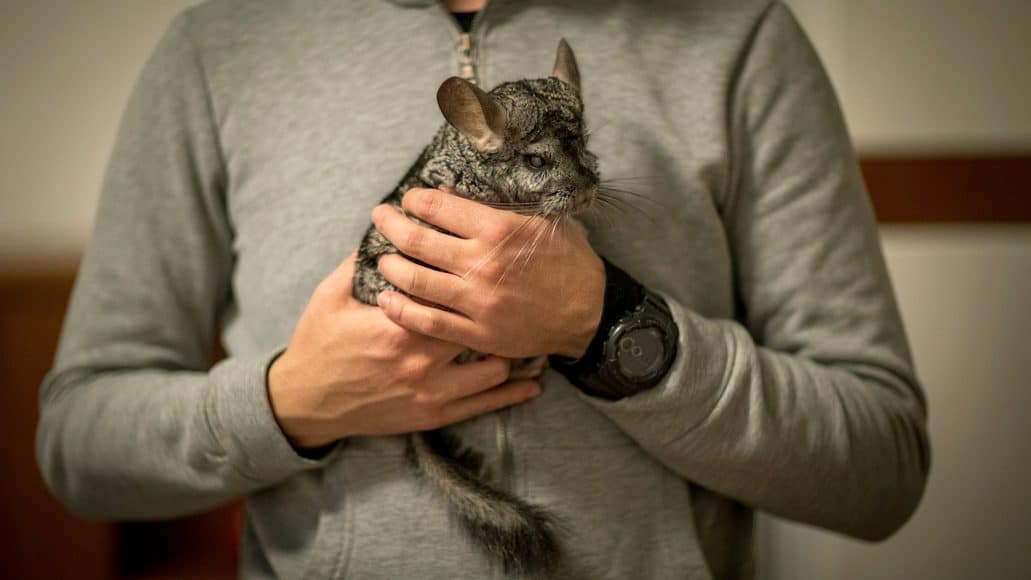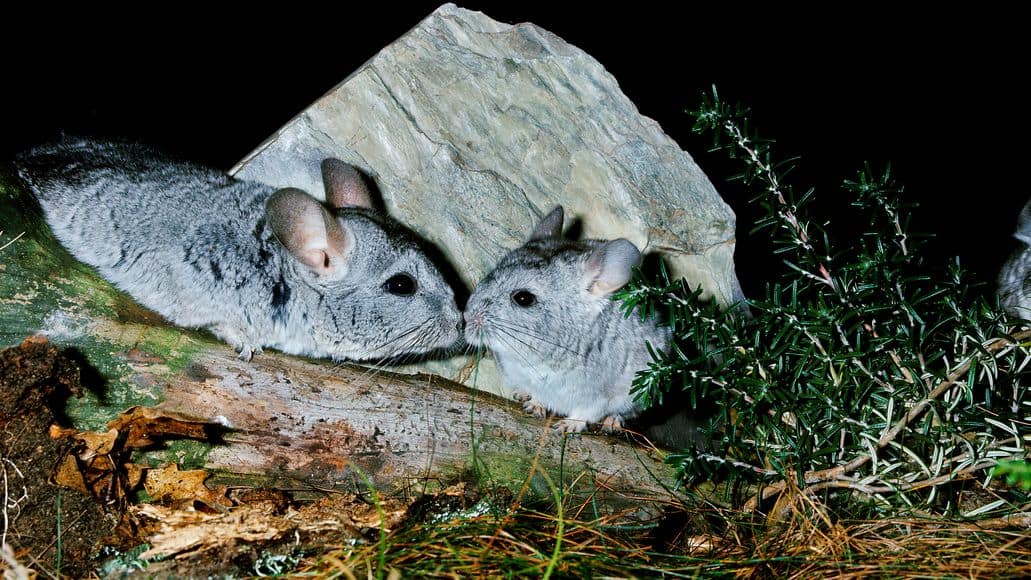
True, it’s not as easy as a mammal, but it’s much easier than a reptile or bird.
Of course, the breeder or pet store should tell you the gender of your chinchilla when you adopt it.
But if, for whatever reason, you find yourself needing to determine the sex of a chinchilla, you might try to take a look at its genitalia for yourself and end up confused.
That’s because both male and female chinchillas have two holes.
Wait, really?
Really. But there is a difference, though it may not be obvious at first glance.
Keep reading and follow the steps below, and you will know what to look for. Sexing a chinchilla will become a quick and easy process.
Contents
How To Tell The Sex Of A Chinchilla
Follow the 4 steps below to accurately determine the sex of your chinchilla. If you prefer not to handle your pet, you can also try to determine the sex by observing its behavior, but this is obviously not as accurate. Nevertheless, we’ll help you with that further down in this article.
Get Your Chinchilla Ready

The first thing you must do when sexing your chinchilla is to carefully place the chinchilla on your lap, either upside down or in a vertical position. I would advise being careful with your chinchilla when doing this, so that you don’t scare it.
Chinchillas are most comfortable on their feet. If you turn them onto their back, they may start squirming or trying to scratch. It is best to turn them over slowly, so they aren’t caught by surprise.
Locate The Genital Area
Next, you need to locate the genital area. This is quite difficult to find on a chinchilla, because they have such dense fur and they are so small! You should, however, be able to find it towards the rear of their body, just underneath the tail.
Inspect The Genitals
Step three is where you may need to grab an extra set of hands, especially if this is your first time sexing a chinchilla. More hands is also useful if your pet is particularly squirmy.
Underneath the tail, you will need to gently part the fur until you find the genitals.
Your chinchilla should always have two small openings. When it comes to determining the sex, what you will need to look out for is how far apart the openings are. The one closest to the tail is the anus, and the one furthest from the tail is either the vagina or the penis.
But how do you know which is which? Well, if you have a female chinchilla, you will find both openings to be closer together, so close they may even be touching. If you have a male chinchilla, these small openings will be further away from each other.
This is the only physical way to tell the sex of your chinchilla, which also means it’s the only accurate method. But there are other ways to get a good guess.
For example, you may be able to tell the difference in sex due to your chinchilla’s characteristics. Females are often more active and sociable. However, due to each chinchilla having its own unique character, this is obviously not a highly accurate method.
Take A Photo

Once you have flipped your chinchilla, parted the fur, and taken a look, my next piece of advice would be to take a quick photo. Yes, you are now a chinchilla pornographer!
Just kidding, it’s all on the up and up. I suggest taking a photo, especially if you are new to sexing chinchillas, because it may take a couple of minutes for you to decipher which sex your chinchilla belongs to.
Your chinchilla is in an uncomfortable position. It will probably be trying to tell you it is uncomfortable by wriggling or making a noise. If you’re like me, this will make you feel very bad.
If you take a quick photo (not too quick; make sure it is in focus and well lit, so that you can use it to determine the sex later), you can flip your poor little chin back over almost instantly and let it get straight back to playing.
The photo then gives you a longer time to study the sex of your chinchilla. You can also compare it to other photos on the web, ensuring that you conclude sexing your chinchilla with an accurate result.
Behavioral Differences
Let’s look at some behavioral differences between male and female chinchillas. Naturally, this will not apply to every chin, but it applies to a lot of them.
These generalizations might help you make an educated guess as to the sex of a chinchilla. Perhaps they can also come in handy if you are deciding whether to get a male or female chin.
Females
When deciding on which chinchilla gender you would prefer, an important impact on your choice may be their difference in behaviours.
Female chinchillas are known to be more territorial. This is because, in the wild, all herd leaders are female.
Another female behaviour to note is that when in heat, a female chinchilla can become quite aggressive. This may be an important factor to consider, particularly if you have younger children that will be handling the chinchilla.
Males
Male chinchillas have been known to become more aggressive during puberty. It may be best to be slightly wary with your male chinchilla during those dreaded teenage years!
Another common behavioural difference with male chinchillas is when they are introduced to females. They may feel the need to fight with any females as a way to assert their dominance. This usually happens if a male and female are housed together.
How Do Chinchillas Mate?

Chinchillas are mammals, and just like other mammals in the animal kingdom, they mate via intercourse. A female will then produce an embryo and give birth a few months later.
A female needs to be in heat to mate. Otherwise, she is likely to turn away the male. If the female decides not to turn away from the male, then the male chinchilla will stand on his hind legs and enter the female from the rear of her body.
If you breed your chinchillas and the female becomes pregnant, you can expect her gestation period to be around 111 days, which is equivalent to around 3 and a half months. Chinchillas can have as many as 4 kits per litter. But the most common number is 2.
Is Your Chinchilla Pregnant?
There are a number of different ways to tell if your chinchilla is pregnant. The most obvious way to tell is by the size of her belly. If you see it starting to swell, this is a sure sign your chinchilla may be pregnant.
You can also check the underside of her belly. If you notice six red bumps, this is her body’s way of preparing for the birth. Those red bumps are her nipples and they are getting ready to nurse her future kits.
Your female chinchilla’s behavior is also likely to change if she’s pregnant. Her body is going to be full of hormones, which will no doubt cause mood swings.
She may also become tired or reluctant to play, especially if she’s carrying more than two kits in there. The more babies, the more she’s going to be feeling particularly heavy! It is also likely she may become defensive when she’s pregnant, as she will be wanting to protect her unborn babies.
If you are unsure as to whether your chinchilla may be pregnant or not, the best thing to do would be to pay a visit to your local vet. They will be able to confirm the pregnancy and also offer any advice in regards to the birth or caring for your female chinchilla and her kits once they’ve been born.
Sexing Chinchillas: Final Thoughts
The easiest and most accurate method of sexing a chinchilla is to simply take a look. Of course, you have t know what you are actually looking for first. Their male and female sex organs don’t exactly look the same as ours.
Follow the steps given above to properly and accurately determine the gender of your chinchilla. If you are unable to make that determination with 100% certainty, then it might be a good idea to contact a vet to make sure.
Leave a Reply